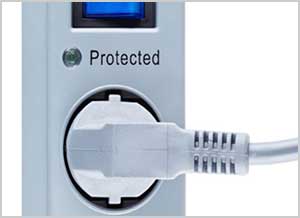Electrical Safety
Every laboratory on the UNC-Chapel Hill campus has electrical equipment that is used routinely in day-to-day operations. Examples include vacuum pumps, electrophoresis devices, stir plates, hot plates, heating mantles, centrifuges, UV lamps, refrigerators and freezers. Electrical equipment can cause fires and electrical shocks if improperly used or poorly maintained.
Inspect electrical cords often and replace any frayed or damaged cords. Please note that extension cords are not a substitute for permanent wiring. Electrical equipment in the lab must be plugged directly into a wall outlet.
Please inspect electrical equipment in your laboratory and remind employees of the risks to life and property. At your next safety meeting, train workers to:
- Inspect wiring of equipment before each use.
- Replace all frayed or damaged electrical cords.
- Only use equipment with three-pronged (grounded) plugs.
- Limit the use of extension cords. Use only for temporary operations.
- Minimize the potential for water or chemical spills on or near electrical equipment.
- Ensure that GFCI outlets are installed and used when water is present within six feet.
- Know the location of circuit breaker panels and how to operate shut-off switches. Use these devices to shut off equipment in the event of a fire or electrocution.
If you have further questions about electrical hazards or suspect a potential hazard in your laboratory please contact Environment, Health and Safety at 919-962-5507.
Electrical malfunctions account for 7,100 fires totaling over $207 million in non-residential building loss in 2016 according to the U.S. Fire Administration. The North Carolina Fire Code prohibits the use of electrical hazards that could contribute to a building fire or an electrical shock injury.



Help keep UNC-Chapel Hill safe with the following office power guidelines:
Use a UL-listed, grounded surge protector instead of a simple power strip. A surge protector will cost more but protect your electronics from power spikes. To identify the difference, look for the energy rating on the package and the protected light on the device.

Surge protectors must be plugged directly into the wall and are not to be used in conjunction with extension cords or daisy-chained together. The device is not designed to handle that much electricity. Additionally, plug appliances and space heaters directly into wall outlets.

Extension cords are not a substitute for permanent wiring. Choose the correct gauge and length cord when one is needed. No extension cord can pass through a door, ceiling, wall, or under furniture. A damaged cord is dangerous so inspect them often.

For more information or guidance, contact EHS Fire Safety at 919-962-5507 or via email.
Associated Departments:
